Read all of art critic David Apatoff’s columns.
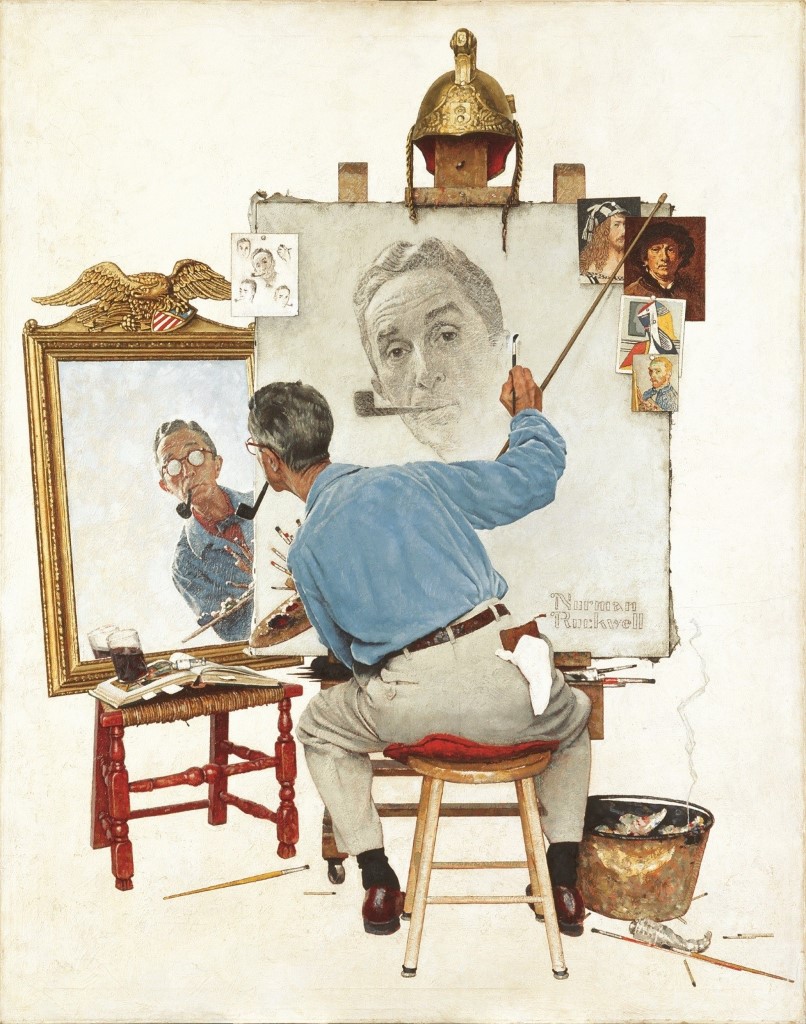
When did it happen?
And how?
Last year, the Wall Street Journal reported that Norman Rockwell’s paintings “have seen a sweeping reassessment by the art market….Rockwell now leads the charge in American art.” The fine art auction gallery Christie’s agreed, reporting that Rockwell’s top price at auction now exceeds the top prices for works by great American masters such as Edward Hopper, Georgia O’Keefe, and Andrew Wyeth.
The New York Times also confirmed: “Rockwell is now undergoing a major critical and financial reappraisal.”
Not long ago, Rockwell’s work was scorned as kitsch by art critics and collectors. Respectable museums would not display his art. Today museums worry that they can no longer afford his art. An important exhibition of Rockwell’s paintings, organized by the Norman Rockwell Museum in Stockbridge, Massachusetts, is midway through an international tour. The exhibition is based on Rockwell’s famous “Four Freedom” paintings. Even as these masterpieces travel to Washington, France, Houston, and Denver, their continued artistic relevance is demonstrated by another exhibition in a New York museum of modern conceptual art. These modern artists have simulated Rockwell’s Four Freedoms paintings, by inserting more diverse characters such as African Americans, LGBTQ people, Muslims, and other historically neglected groups. Relying on photography and Photoshop to mimic effects that Rockwell was able to achieve with his hands, they have tried to piggyback on the artistic power of Rockwell’s originals.
I would not discourage anyone from seeing the modern versions, but I strongly urge readers to go see Rockwell’s originals if they come to your city. The show offers a rare opportunity to view some brilliant and socially significant painting that will only continue to grow in stature.
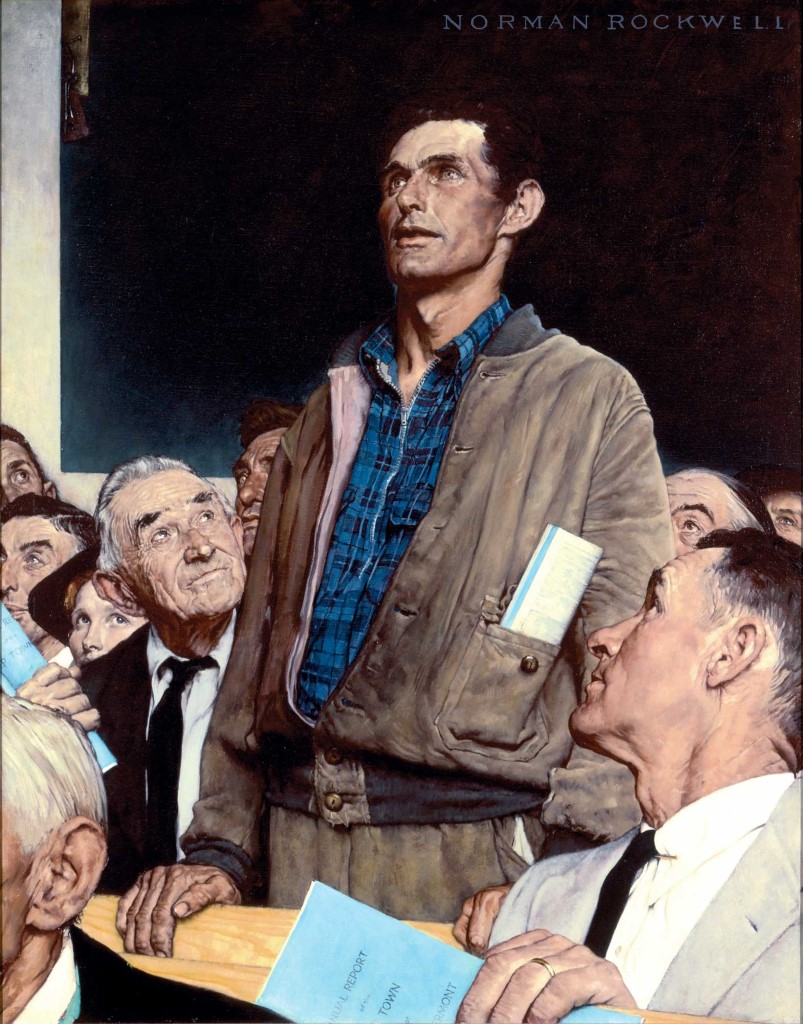
In the years before Rockwell re-emerged as an important artist, famed art critic Clement Greenberg, America’s primary champion for modern abstract art, argued that Rockwell’s paintings should not be taken seriously: “you have to put Rockwell down, down below the rank of minor artist. He chose not to be serious.” Greenberg was the dean of modern art critics and a cheerleader for the avant garde. His opinion held great sway with other critics and collectors. He derided Rockwell’s paintings for being popular with the common, lowbrow crowd. Of course, such arrogance was nothing new; the great Roman poet Horace said it long ago: Odi Profanum Vulgus Et Arceo — “I detest the common crowd, and I rebuff them.” The fact that Rockwell remained popular with the public counted against him in an era when modern art was rebelling against traditional painting.
While Rockwell was earning a good living as the cover artist for The Saturday Evening Post, he was hurt by the critical reaction to his work. For a while he considered giving up illustration altogether and going to Paris to become a different kind of painter. He made a separate trip to Amsterdam, where he visited Rembrandt’s house. He stood alone in Rembrandt’s studio, looked up at the ceiling and called out, “Rembrandt? It’s me, Norman.…[long pause] What do you think?”
Despite his insecurities, Rockwell decided to stick with illustration. He had, through a combination of luck and hard work, found his calling. He spent the majority of waking hours in front of his easel doing what he loved.
Some major artists recognized the quality of Rockwell’s work and were not put off by the critics. Andy Warhol, for example, began collecting Rockwell paintings as soon as he could afford them in 1968. Famed directors Steven Spielberg and George Lucas also became major collectors of Rockwell’s paintings, saying they learned from his “cinematic devices” and the way he staged a story. Even some of the hippest writers and artists lauded Rockwell’s work. Frank Miller, popular media icon and creator of the “Batman: The Dark Knight” and “Sin City” series scoffed at the notion that Rockwell’s paintings were clichés: “They weren’t clichés until Rockwell invented them and they were embraced by the public.”
The critics resisted as long as they could, and some still resist today, but with the passage of time, the permanent qualities in Rockwell’s painting softened the opposition and gradually commanded more and more critical approval.
By the way, remember that art critic, Clement Greenberg? It turned out there was another side to his story. In 1980, after Rockwell had passed away, Greenberg confessed to a reporter that when Greenberg was a student he “wanted to paint like Rockwell” but lacked the talent. He and another art student made a trip to “visit the master” at his home in Massachusetts. Greenberg recalled, “Rockwell met us at the gate and I said, ‘I’m so glad to meet you Mr. Rockwell; you’re my idol.’” Rockwell’s humble response was, “Mr. Greenberg, I would’ve hoped that you’d outgrown me by now.”
Greenberg never could succeed in painting like Rockwell, but he became very good at writing long and brainy essays attacking traditional art.
Still, looking back to his meeting with Rockwell, Greenberg seemed almost wistful: “We spent the day with him [and] …he struck me then as rather happy.”
Perhaps Rockwell sensed that someday he might have the last laugh.
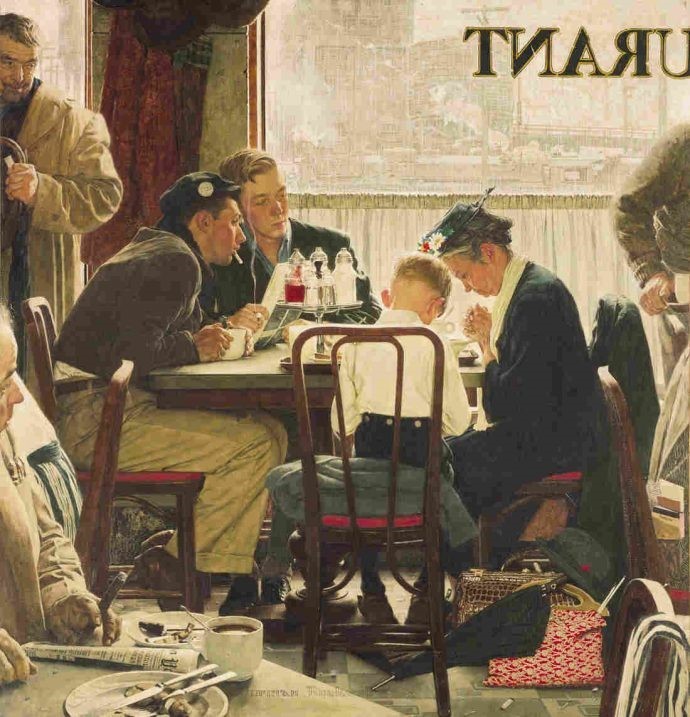
Featured image: ©SEPS
Become a Saturday Evening Post member and enjoy unlimited access. Subscribe now
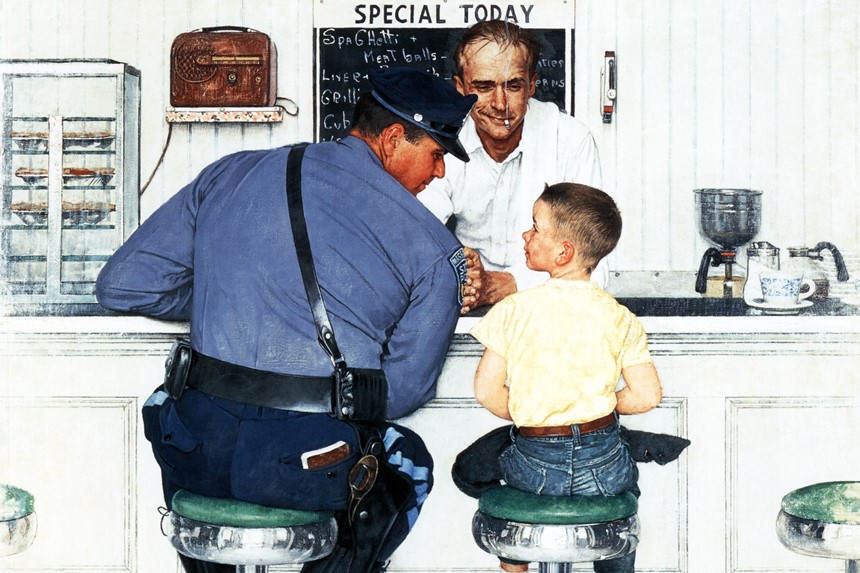


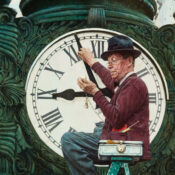
Comments
There’s a difference between art that makes one feel, ponder life. Being a talented illustrator is a gift many would love to possess. That some who’d look at a Rothko with “a child could do that” scorn would love the simplistic Americana of Rockwell’s art is not surprising.
I would say it was Art critics and dealers who got the last laugh– on Norman Rockwell. Scorned by the effete art mob as being insignificant, just an illustrator, and not an artist, dealers, and Rockwell’s former critics, then capitalized on Rockwell’s post mortem fame and the enduring truth of his magnificent talent.
Bob Taylor, I understand your desire to be able to edit your comments. I put a lot on this site, and, like an actor looking at one of his films, sometimes wish I’d worded this or that differently. I proof-read before clicking ‘Post’ and I’ll still find a mistake later I swear was NOT there before the click. Sometimes I think it can be from my sentence restructurings that confuses the computer.
Anyway, I liked your comments and would encourage you to do so more often. As for mine here, I do love them, but wonder if my 2nd ’emptied’ could be a redundancy. I gravitate on whether it is. This is why Lexus isn’t the only one relentlessly pursuing perfection. These comments are for The Saturday Evening Post, after all!
“… dismissive contempt…” is a redundancy, for which I apologize. I wish we could edit our comments!
Virgil Thomson was a music critic, and a very minor composer. This article reminds me of Thomson’s sniffy, dismissive contempt of George Gershwin because Gershwin wrote songs which people love.
I loved Rockwell’s art way, back in 1965. Not being able to afford originals I purchased plates which still sit on mantle over a fireplace. I guess I appreciated Real works of Art a long time ago.
It’s actually been quite a few years since Rockwell got the last laugh, with his art no longer scorned as kitsch by art collectors and critics alike. They’re the ones who ‘oohed and aahed’ over the emptied contents (garbage) of emptied vacuum cleaner bags as art! How fitting then, that now many of those same ‘respectable’ art museums worry that they cannot afford his art. That’s good, David. Let them sweat it out!
Clement Greenberg just LOOKS like he’d part of that scene. I’m sorry he was so influential for so long. At least he did admit he was secretly jealous of Rockwell. I’m glad their meeting went well though. Rockwell was very gracious and Greenberg seemed to have a change of heart. Mentally, I would have thrown a drink in Clement’s face. It wouldn’t be the first time!
The New York Times and Wall Street Journal are doing features on Rockwell’s art because they’re worth a lot of money. They’re a little late to the party if they’ve only discovered that last year. Wake up and look around you. It took record value selling prices at Christie’s to get them to realize what we’ve all known, loved and appreciated for 103 years, right?